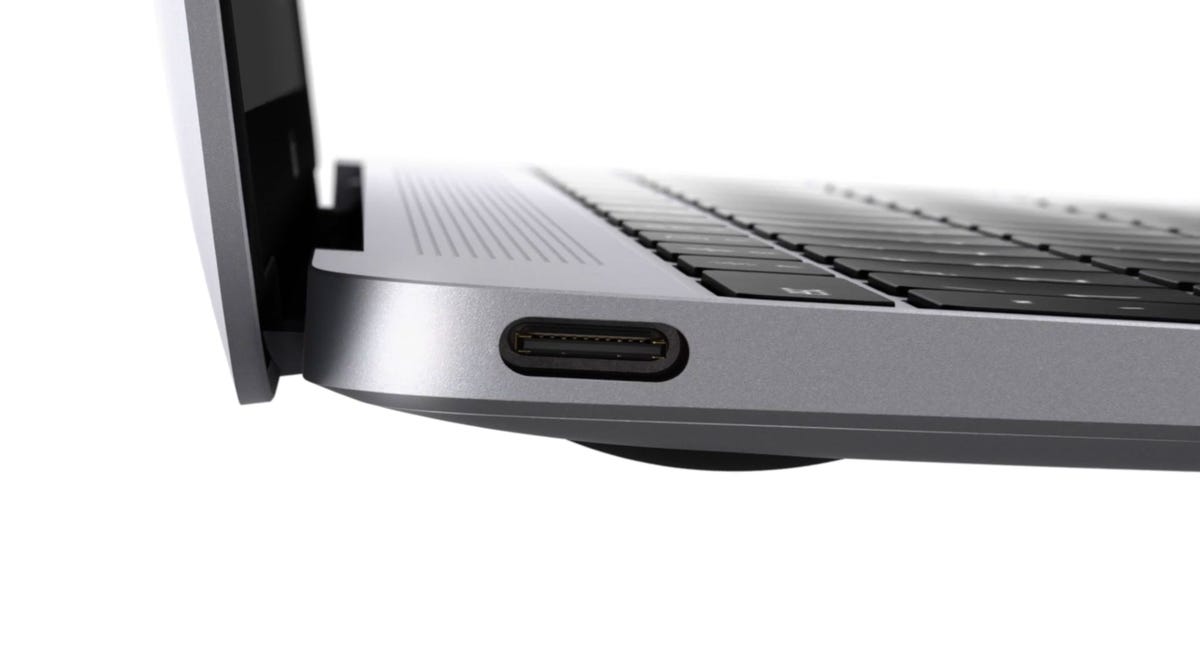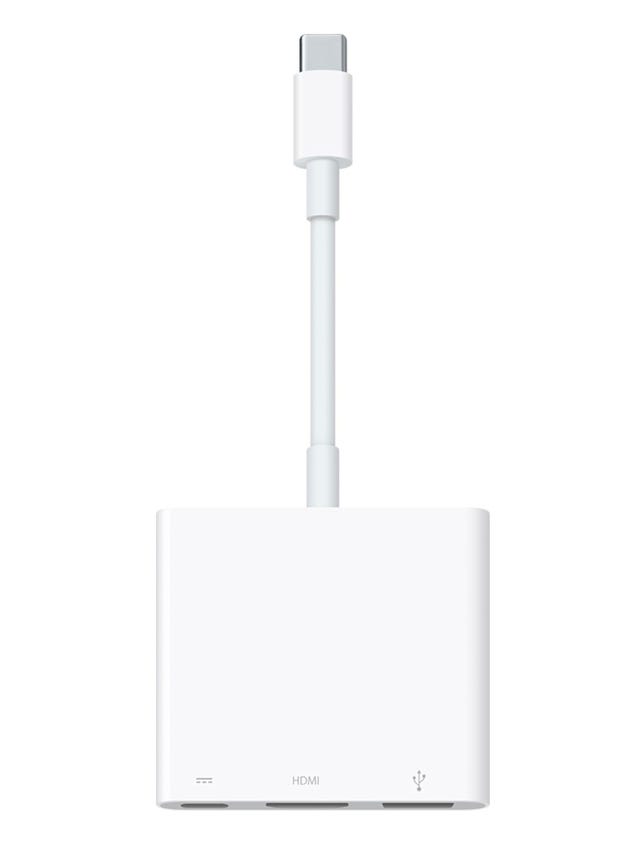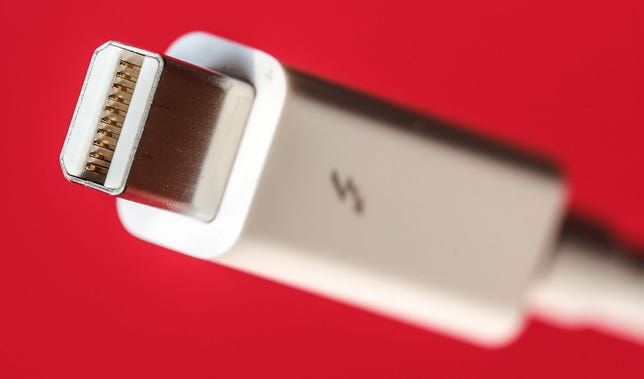
Apple
Ready or not, Apple’s new MacBook is cutting the computing industry’s cables.
The slim laptop has just a single USB port, the new tiny Type-C variety that’s slowly popping up in devices this year. It’s a multipurpose port that connects to external devices like hard drives, runs video to TVs and external monitors, and supplies the laptop with power when it’s charging time.
The new USB port is remarkably flexible, but it’s still just one port. For those who need to attach printers, Ethernet cables, external hard drives, cameras, monitors, keyboards, mice, TVs, game controllers and tablets, that might seem confining.


Now playing:
Watch this:
Key features of USB type-C you should know
1:10
You’d better get used to it, because the new MacBook hints at the direction the industry is headed as it relies increasingly on wireless technology. The awkward transition highlights the privilege and pain that comes with being an Apple customer. It also underscores the unique position Apple enjoys, one where it can make drastic changes to transform the computing industry because, well, it can get away with it.
“They’re as usual ahead of the curve,” Endpoint Technologies analyst Roger Kay said of the pared-down ports and pumped-up wireless abilities on Apple’s latest laptop.
Apple, one of the world’s largest smartphone and tablet makers, would like you to look ahead. In Apple’s debut of the laptop Monday, Phil Schiller, senior vice president of worldwide marketing, said of the single-port design, “The only intelligent vision for the future of the notebook is one without wires, where you don’t have to plug up cables to connect to things.”
Apple has a history of cutting off old technology it sees as doomed. With the 1998 all-in-one iMac, it ditched its old Apple Desktop Bus connector in favor of USB for keyboards and mice, and more controversially, ditched the floppy disk drive, too. Nowadays, ADB connectors are a historical footnote and floppies are dead. When the original MacBook Air arrived in 2008, Apple excised the CD drive and Ethernet port, a choice it carried over to the higher-end MacBook Pro. Those moves are suited to the increasingly normal world of app downloads and Netflix over Wi-Fi.
Apple could reverse itself and add more ports to future versions of the MacBook — as it did when revising its original MacBook Air. But for now, consumers will have to deal with a single-port reality or pick some other new laptop.
Left in the lurch
Change can be painful for longtime customers, and the new MacBook design won’t be for everybody, even leaving aside the $1,299 starting price.


Apple
Professionals who need to connect lots of devices, including those using the high-speed Thunderbolt ports that Apple has pushed for years, will want to look elsewhere. Power users who want to use a reliable Ethernet adapter while charging and backing up data to an external drive will be out of luck. Road warriors who need to load a presentation from a thumb drive and show it on a projector will need “dongles” like Apple’s $79 USB-C Digital AV Multiport Adapter .
“Yes, many will complain, but that’s the cost of progress,” said IDC analyst Tom Mainelli. From a business perspective, Apple’s willingness to push for that progress ultimately wins out — at the expense of rivals.
“Somebody has to go first, and I would argue that it’s design decisions like this that drives the level of devotion that Apple enjoys. It’s this devotion that allows Apple to enjoy the margins that they do versus the rest of the PC market,” Mainelli said. “Other vendors would argue, correctly, that they can’t get away with this because their customers would push back too much, and they’re probably right.”
Chicken and the egg, solved
Apple is “uniquely qualified” to solve the chicken-and-egg problem, a common dilemma in computing industry where a new technology won’t be adopted until users embrace it, but users won’t embrace it until it’s widely supported, according to Mike Feibus of TechKnowledge Strategies.
“Apple’s usual fanboys will buy it no matter what,” he said. Those customers, plus Apple’s influence, will drive the industry to start creating accessories and products that get around the single-port limitation, he said.
Thus, in the long run, the new MacBook will help bring about a future with a richer collection of wireless devices and advanced USB-connected docking stations, Feibus said.
Apple also has an answer to those worried about getting everything to work: just stick with its own suite of products and services.
“When you want to watch content on your TV, you do it with AirPlay,” Schiller said. “When you want to share files, you do it with AirDrop. When you want to get on the cellular network, from your MacBook you can initiate a hotspot on your iPhone. When you want to kick back and listen to music, you can do it wirelessly with some very cool Beats speakers and headphones.”
The whole industry is moving the same direction, though. Microsoft’s newest keyboard, the Designer Bluetooth Desktop, uses a laptop’s built-in Bluetooth wireless link, meaning that there’s no need to fill up a USB port with the proprietary wireless connector the earlier Sculpt keyboard uses. Cameras increasingly come with wireless links that can make USB cables or memory card readers obsolete. And our embrace of tablets and smartphones means we rely on Net-linked services, not cables, to synchronize data.
But for handling all of today’s cabled devices, there’s another alternative, too: avoid buying a MacBook. For people who need to plug in more devices, there will be machines like Apple’s MacBook Pro — or any number of Windows PCs studded with ports.
One port to rule them all


Apple
Fortunately, even Windows PC users will be able to take advantage of this revolution, because USB is an industry. That means there’s a strong incentive for lots of companies to build compatible devices to support Windows PCs — not to mention phones, tablets, cars, and any number of other products that need a data or power connection. Instead of devices that generally only work with Macs — as was the case for hard drive makers and others considering support for Thunderbolt — USB is everywhere, and the new Type-C connector will spread widely.
The Type-C connector (USB-C, as Apple calls it) is about as small as the Micro USB port that’s become ubiquitous on Android smartphones. USB Type-C is reversible, unlike previous incarnations of USB, so you won’t need to figure out which way to plug it in. And as USB Type-C spreads to PCs, phones, cameras and other devices, cables with Type-C connectors at both ends will become common.
If it all works out according to plan, the new design will sweep aside the eyestrain-inducing profusion of USB options like Standard-A, Standard-B, Mini-B, Micro-B, Micro-B USB 3.0, and Standard-B USB 3.0. As the disparaging saying goes, the great thing about standards is there are so many to choose from.
The simplicity is only one change coming to USB that makes it possible for Apple and others to rely on it more. Another benefit is a technology called USB Power Delivery (PD), a feature that allows you to more quickly charge devices with bigger batteries than smartphones and tablets (like laptops).
USB can also send video data, as long as people buy the appropriate cables or adapters to link to more mainstream video connectors like HDMI.
This broadening job description for USB is powered by faster data transfer speeds — 5 gigabits per second for USB 3.0 and 10Gbps for the newer USB 3.1. It’s all serving to make the “universal” in the Universal Serial Bus even more fitting.
Sidelining Thunderbolt


Stephen Shankland/CNET
USB Type-C and wireless connections are the future. Left out in the cold is Thunderbolt, the high-speed connector from Intel that can connect to hard drives, bigger storage arrays, monitors and docking stations.
Thunderbolt arrived in 2011 on Apple MacBook Pros and has appeared on every redesigned Mac since, including a starring role in Apple’s top-end Mac Pro. The new MacBook, though, indicates that Apple has come around to the industry’s view of Thunderbolt: not worth it.
Thunderbolt won some allies beyond Apple, but one early supporter, Acer, dropped out. This year, Dell added Thunderbolt support to its M3800 workstation laptop — but it’s a machine designed to coax Mac users to the Windows world with minimal disruptions.
The muted reaction to Thunderbolt runs counter to the high hopes Intel had for the connection technology in 2012. “Our goal over the longer term, three or five years out, is that it would be broadly deployed across most PCs,” said Jason Ziller, Intel’s director of Thunderbolt marketing and planning, in an interview at the time.
Instead, USB’s dominance and growing capability killed any mainstream Thunderbolt potential, Feibus said.
Apple’s Pro-branded Macs likely will support Thunderbolt for a while, especially given its 20Gbps data-transfer rate that’s useful for video editors pumping mammoth quantities of megapixels around. For the rest of us, USB 3 and wireless technologies will do just fine.
Even with Thunderbolt losing out to mainstream USB, Apple has plenty of sexy technology to carry the day.
The new MacBook, after all, also packs a low-power but high-resolution Retina Display, a more advanced trackpad and “terraced” batteries into a housing just 13.1 millimeters thick at most — thinner than the Air. That kind of innovation serves the company well, even when customers just buy a now ho-hum $800 MacBook Air, said Patrick Moorhead of Moor Insights & Strategy.
“It continues their market share gains,” Moorhead said. “Having that product you lust after, even though it might not be for you, helps sell everything else.”




